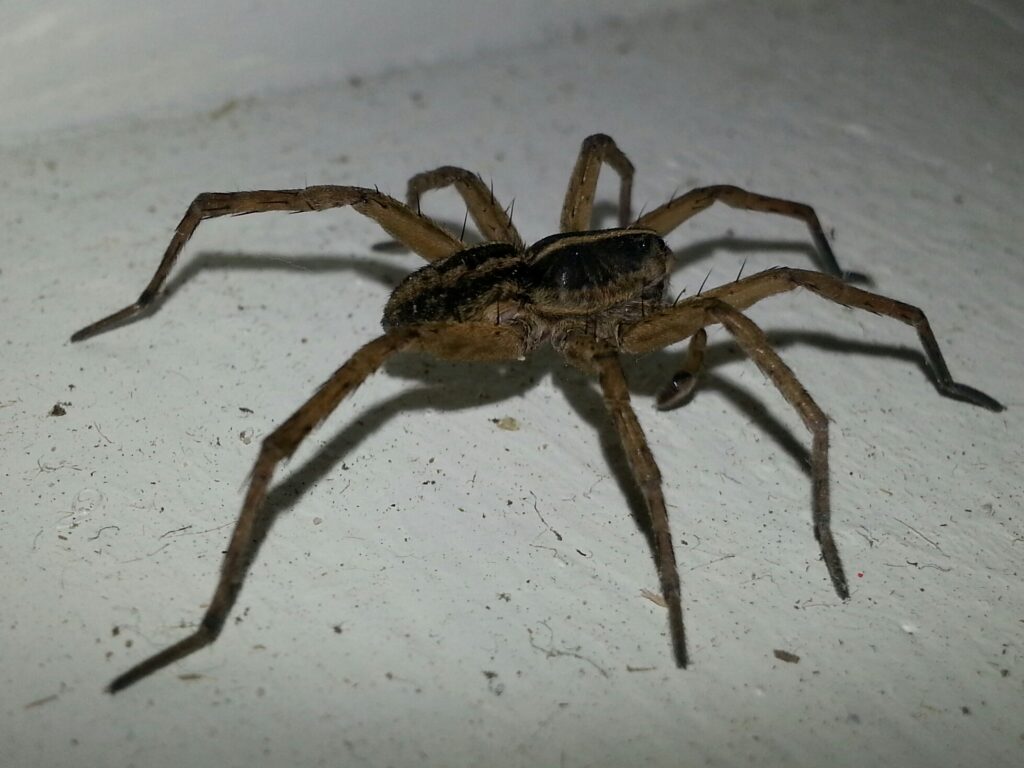 When the cold weather hits, many people wonder how spiders survive winter. Unlike some insects that perish in the cold, spiders have developed impressive adaptations to make it through. During the winter months, spiders enter a state called diapause, which is similar to hibernation. This allows them to slow down their metabolism and conserve energy.
Another key adaptation is their ability to produce antifreeze proteins, which prevent their bodily fluids from freezing, ensuring they stay alive even when temperatures drop. You might also notice fewer spiders in your home during winter, as many of them seek out sheltered environments like leaf litter, under rocks, or within tree bark.
Understanding what happens to spiders in winter can help homeowners be more prepared and less anxious about seeing these eight-legged creatures when the warmer months return. If you're looking to get rid of spiders that decide to take refuge in your home during the winter, the best approach is to ensure your home is properly sealed and kept clean. Regular housekeeping can go a long way in keeping spiders at bay and making your living space comfortable throughout the season.
When the cold weather hits, many people wonder how spiders survive winter. Unlike some insects that perish in the cold, spiders have developed impressive adaptations to make it through. During the winter months, spiders enter a state called diapause, which is similar to hibernation. This allows them to slow down their metabolism and conserve energy.
Another key adaptation is their ability to produce antifreeze proteins, which prevent their bodily fluids from freezing, ensuring they stay alive even when temperatures drop. You might also notice fewer spiders in your home during winter, as many of them seek out sheltered environments like leaf litter, under rocks, or within tree bark.
Understanding what happens to spiders in winter can help homeowners be more prepared and less anxious about seeing these eight-legged creatures when the warmer months return. If you're looking to get rid of spiders that decide to take refuge in your home during the winter, the best approach is to ensure your home is properly sealed and kept clean. Regular housekeeping can go a long way in keeping spiders at bay and making your living space comfortable throughout the season.
Adaptation Through Hibernation
One of the most common questions we get asked is, “what happens to spiders in winter?” Many people assume they simply die off, but that's far from the truth. Various species enter a state of dormancy, akin to hibernation, known as diapause. During this period, their metabolic rate drops significantly, allowing them to survive without food for extended periods. Diapause is an incredible adaptation that has allowed spiders to conserve energy. It typically begins as the temperatures start to drop and daylight hours decrease. Spiders find sheltered spots in leaf litter, under logs, or even in the crevices of buildings, where they remain inactive until spring returns. This strategy is crucial for their survival, giving them the ability to withstand the harsh conditions of winter. The slow metabolism ensures they use minimal energy, which is vital when food sources are scarce. Interestingly, the onset of diapause is triggered by environmental cues, particularly temperature and light. This means spiders can accurately anticipate the arrival of winter and prepare accordingly. This adaptive behaviour is a testament to the intricate ways in which spiders have evolved to survive seasonal changes.Antifreeze Proteins
Another fascinating adaptation involves the production of antifreeze proteins. Yes, you read that correctly—much like some fish and insects, spiders have developed the ability to produce antifreeze proteins to prevent their bodily fluids from freezing. This adaptation is particularly evident in species found in temperate and polar regions. These proteins work by inhibiting the formation of ice crystals in the spider's body. By binding to small ice crystals, the proteins prevent them from growing larger and causing cell damage. This biochemical marvel allows spiders to remain active at sub-zero temperatures, a crucial advantage for those living in colder climates. Imagine being able to function normally even when the temperature drops well below freezing; that's essentially what these spiders are doing. The presence of antifreeze proteins is a perfect example of evolutionary ingenuity. It showcases how spiders have fine-tuned their physiology to survive in various environments. This adaptation not only highlights their resilience but also their ability to thrive in conditions that many other organisms would find uninhabitable.Behavioural Adaptations
Behavioural adaptations also play a significant role in how spiders survive winter. Many species exhibit changes in their habits and routines to cope with the colder months. For instance, some spiders will seek shelter indoors as the weather begins to cool. Homeowners might notice an increase in spider sightings inside their homes during autumn and early winter. By moving indoors, these spiders take advantage of the relatively stable and warmer environment provided by human habitation. They find refuge in basements, attics, and other less frequented areas of the house. This behaviour not only helps them escape the cold but also protects them from predators and other environmental hazards. Another behavioural adaptation is the change in their hunting and feeding habits. During the warmer months, spiders are active hunters, often weaving intricate webs to catch prey. However, as winter approaches and prey becomes scarce, many spiders reduce their feeding activities. Instead, they rely on the energy reserves built up during the summer and fall. This shift in behaviour is crucial for their survival, as it ensures they don't expend unnecessary energy when food is hard to come by.Egg Sac Protection
 Spiders have also developed strategies to ensure the survival of their offspring during winter. Many species lay eggs encased in silken sacs, which provide protection from the cold. These sacs are often hidden in sheltered locations, such as under rocks, logs, or within the nooks and crannies of buildings.
The silken sac acts as an insulator, maintaining a relatively stable microenvironment for the developing eggs. Some species even incorporate antifreeze proteins into the egg sac, providing an additional layer of protection. By ensuring the eggs are safeguarded against the cold, spiders increase the likelihood of their offspring surviving to the next generation.
The timing of egg-laying is also crucial. Many spiders lay their eggs in late summer or early fall, giving the eggs time to develop before winter sets in. The eggs then remain dormant throughout the winter, hatching in the spring when conditions are more favourable. This strategy ensures that the newly hatched spiderlings emerge when food is abundant, increasing their chances of survival.
Spiders have also developed strategies to ensure the survival of their offspring during winter. Many species lay eggs encased in silken sacs, which provide protection from the cold. These sacs are often hidden in sheltered locations, such as under rocks, logs, or within the nooks and crannies of buildings.
The silken sac acts as an insulator, maintaining a relatively stable microenvironment for the developing eggs. Some species even incorporate antifreeze proteins into the egg sac, providing an additional layer of protection. By ensuring the eggs are safeguarded against the cold, spiders increase the likelihood of their offspring surviving to the next generation.
The timing of egg-laying is also crucial. Many spiders lay their eggs in late summer or early fall, giving the eggs time to develop before winter sets in. The eggs then remain dormant throughout the winter, hatching in the spring when conditions are more favourable. This strategy ensures that the newly hatched spiderlings emerge when food is abundant, increasing their chances of survival.

